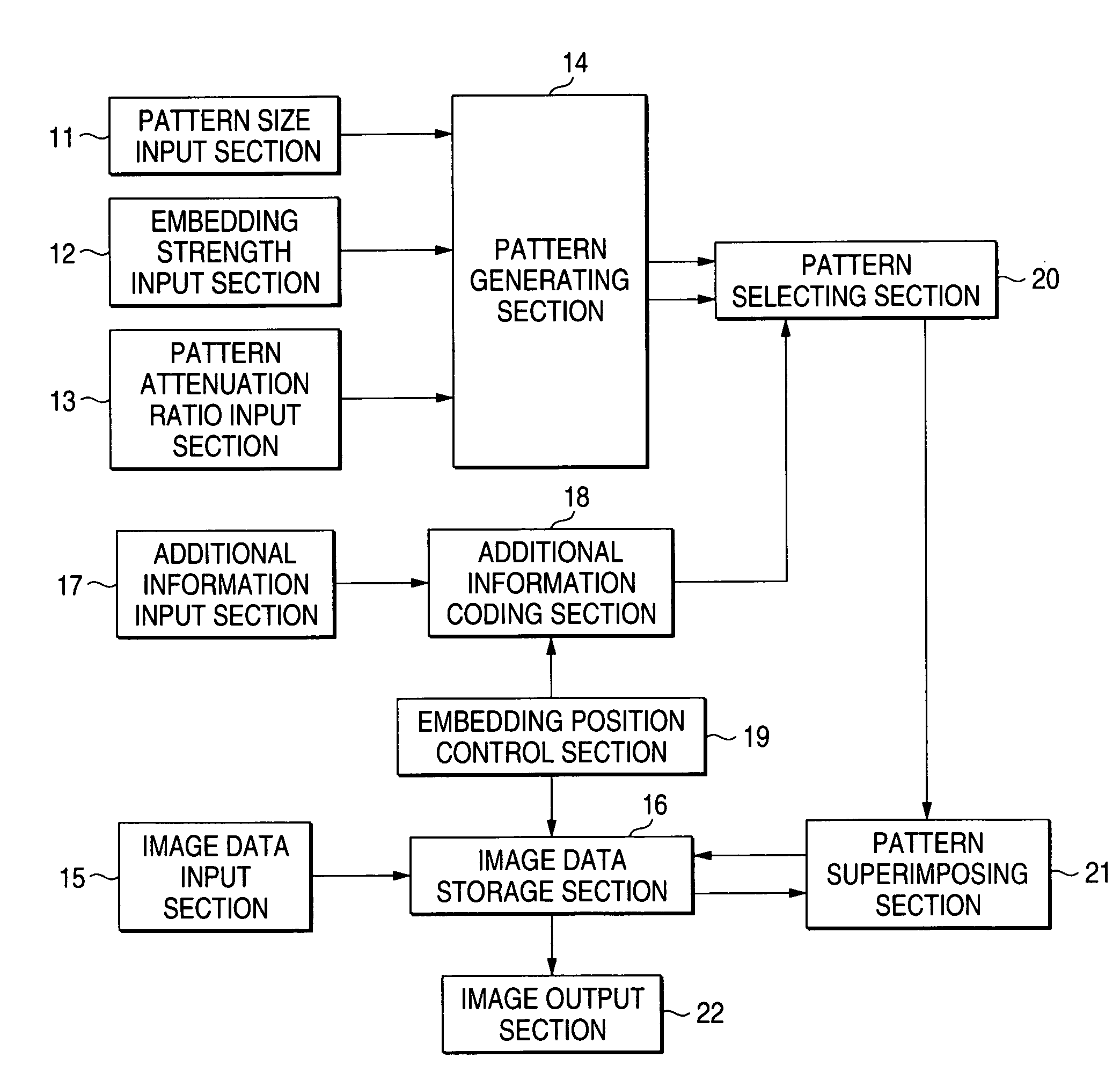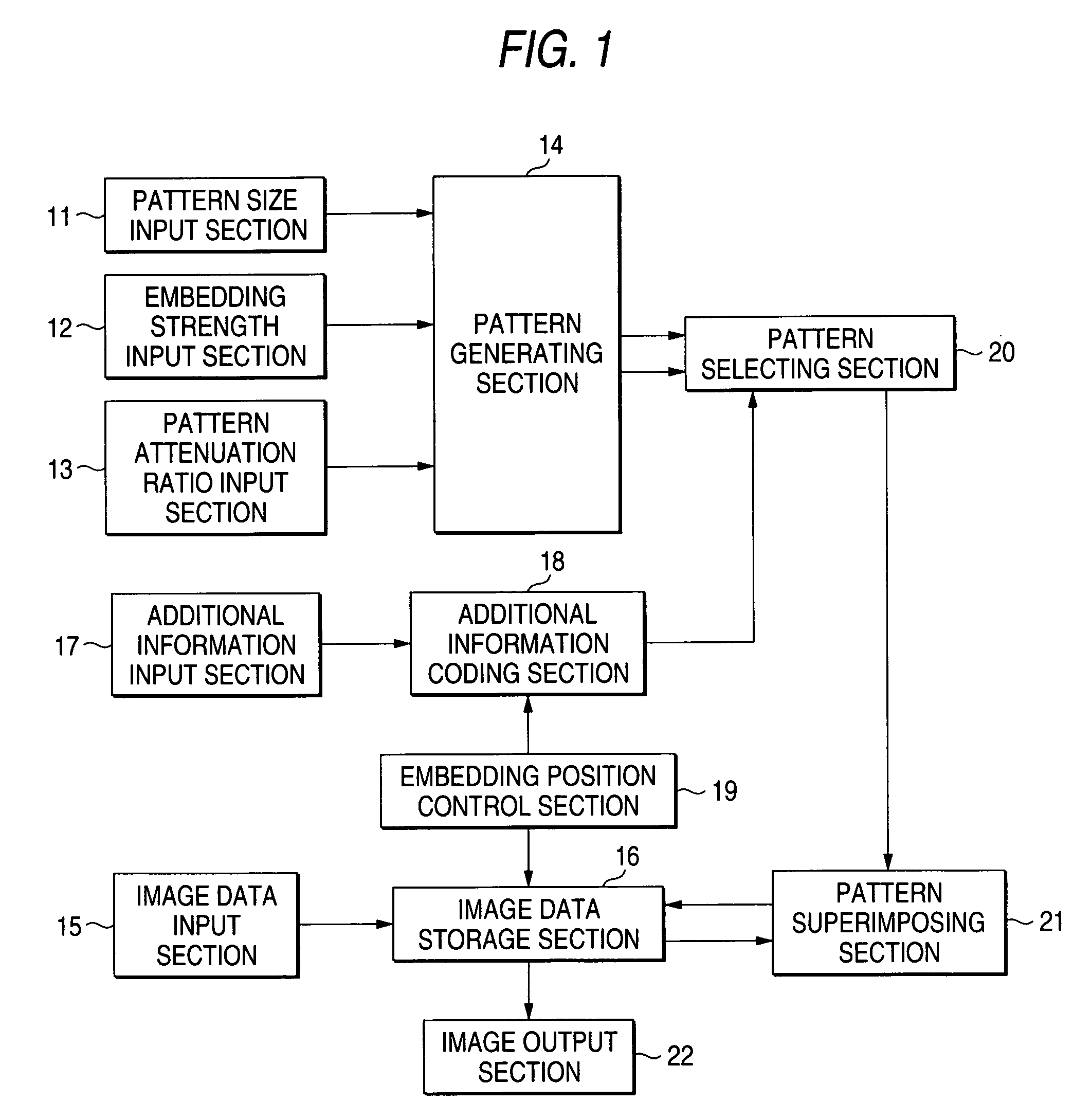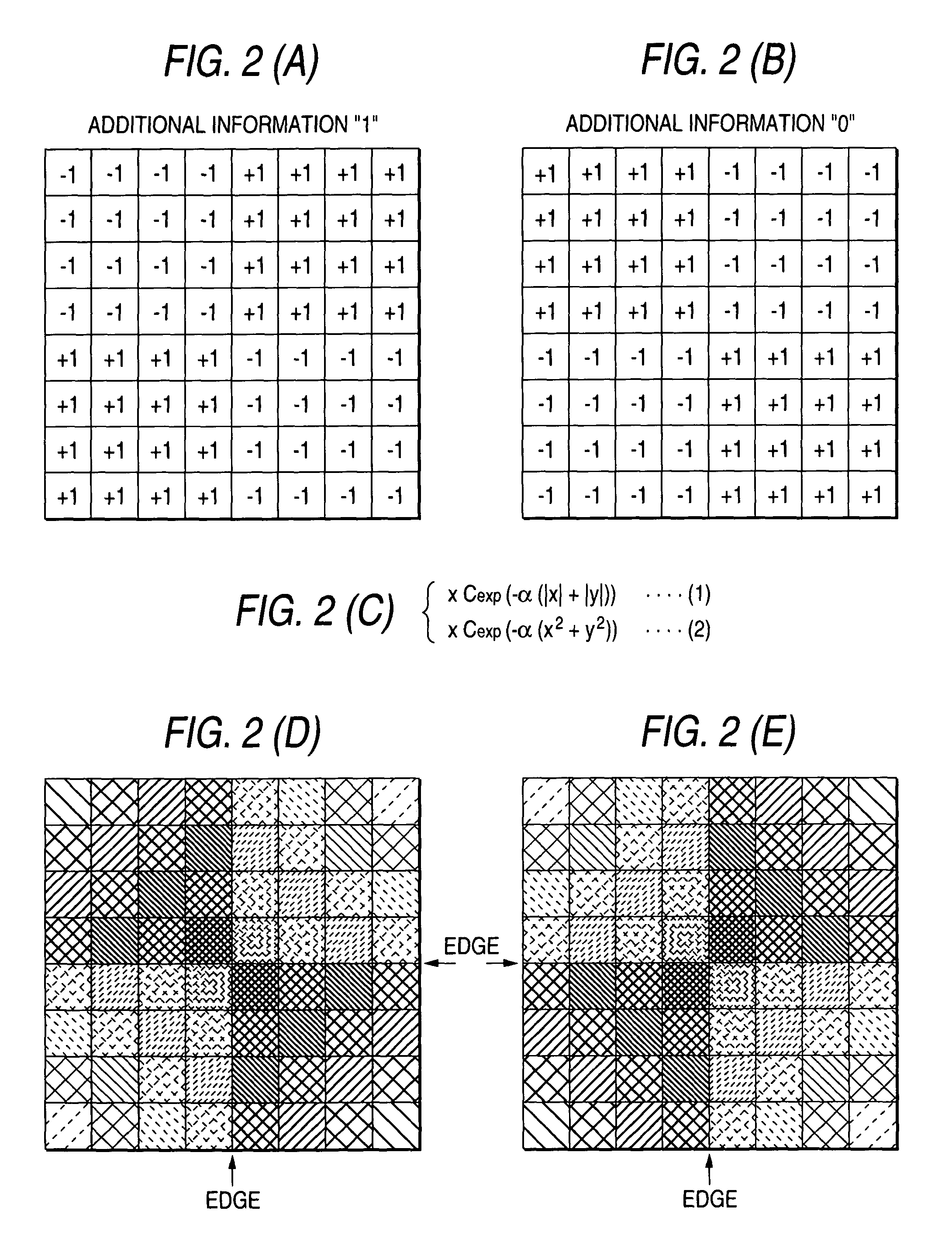Image processing apparatus, image processing method, and storage medium of image processing program
a technology of image processing and image data, applied in image watermarking, instruments, secret communication, etc., can solve the problems of deteriorating image quality, difficult to detect information from image data under stable conditions, and no digital watermarking technique used via non-electronic media
- Summary
- Abstract
- Description
- Claims
- Application Information
AI Technical Summary
Benefits of technology
Problems solved by technology
Method used
Image
Examples
first embodiment
[0047]FIG. 1 is a block diagram for indicating one structural example of an additional information embedding side according to a first embodiment of the present invention. In this drawing, reference numeral 11 denotes a pattern size input section; reference numeral 12 indicates an embedding strength input section; reference numeral 13 represents a pattern attenuation ratio input section; reference numeral 14 denotes a pattern generating section; reference numeral 15 denotes an image data input section; reference numeral 16 indicates an image data storage section; reference numeral 17 represents an additional information input section; reference numeral 18 denotes an additional information coding section; reference numeral 19 is an embedding position control section; reference numeral 20 represents a pattern selecting section; reference numeral 21 denotes a pattern superimposing section; and reference numeral 22 indicates an image output section.
[0048]The pattern size input section 1...
second embodiment
[0125]Next, a description will now be given on a second embodiment of the present invention. FIG. 17 is a block diagram for indicating one structural example of an additional information embedding side according to the second embodiment. It should be noted that the same reference numerals shown in FIG. 1 will be employed as those for denoting the same, or similar structural elements ofFIG. 17, and explanations thereof may be omitted. Reference numeral 61 indicates a pattern attenuation ratio calculating section. In this second embodiment, while this pattern attenuation ratio calculating section 61 is provided instead of the pattern attenuation ratio input section 13, a pattern attenuation ratio is acquired by way of a calculation.
[0126]The pattern size input section 11 selects an image output device to which a user has previously been registered via either a personal computer or an operation panel, which are not shown. Since this output device is selected, the pattern size input sec...
third embodiment
[0136]Next, a description will now be given on a third embodiment of the present invention. FIG. 19 is a block diagram for indicating one structural example of an additional information embedding side according to the third embodiment. It should be noted that the same reference numerals shown in FIG. 1 will be employed as those for denoting the same, or similar structural elements of FIG. 19, and explanations thereof may be omitted. Reference numeral 71 indicates an embedding strength control section; reference numeral 72 shows a minimum embedding strength input section, and reference numeral 73 represents a maximum embedding strength input section. In the above-described respective embodiments, the pattern is embedded at a constant embedding strength irrespective of the inputted image data. As a result, the patterns are embedded at the same strengths even in the flat portion where the embedded pattern can be easily identified, and also even in such a place where the strong edge is ...
PUM
 Login to View More
Login to View More Abstract
Description
Claims
Application Information
 Login to View More
Login to View More - R&D
- Intellectual Property
- Life Sciences
- Materials
- Tech Scout
- Unparalleled Data Quality
- Higher Quality Content
- 60% Fewer Hallucinations
Browse by: Latest US Patents, China's latest patents, Technical Efficacy Thesaurus, Application Domain, Technology Topic, Popular Technical Reports.
© 2025 PatSnap. All rights reserved.Legal|Privacy policy|Modern Slavery Act Transparency Statement|Sitemap|About US| Contact US: help@patsnap.com



